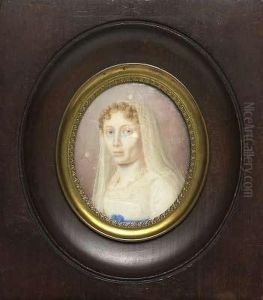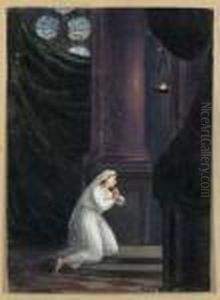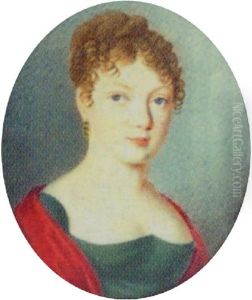Ludwig Neureuther Paintings
Ludwig Neureuther, born Eugen Napoleon Neureuther on April 13, 1807, in Munich, Bavaria, was a prominent German artist and etcher known for his contributions to the Romantic movement in art. His work is characterized by a deep appreciation for medieval and early Renaissance art forms, as well as a keen interest in German folklore and fairy tales, which he often incorporated into his etchings and illustrations. Neureuther's artistic journey was influenced by the cultural milieu of early 19th-century Germany, a period that saw a resurgence in the appreciation of its national history and folklore, partly as a reaction to the Napoleonic wars and the subsequent desire for a unified German identity.
Neureuther initially trained as an architect under Friedrich von Gärtner at the Ludwig-Maximilian University of Munich, but his passion for graphic arts led him to pursue a career in etching and illustration. His most notable work, the 'Randzeichnungen zu Goethe’s Balladen und Romanzen' (Marginal Drawings to Goethe’s Ballads and Romances), published in 1829, was a groundbreaking series of etchings that illustrated the works of Johann Wolfgang von Goethe, one of Germany's most revered poets. This series not only earned him widespread acclaim but also established his reputation as a leading figure in the Romantic movement's visual arts sector.
Throughout his career, Neureuther continued to explore the themes of Germanic mythology, legend, and history, which he depicted with a delicate and detailed style. His other significant works include illustrations for Ludwig Tieck's 'Phantasus' and contributions to various literary and art journals of the time, which played a crucial role in the revival of the woodcut and etching techniques in Germany. Despite his focus on the past, Neureuther's work was innovative in its approach and execution, blending traditional motifs with contemporary artistic trends.
Ludwig Neureuther's contributions to the Romantic movement extended beyond his etchings and illustrations. He was also involved in the design of stained glass windows and mural paintings, further showcasing his versatile talent. His legacy is that of an artist who bridged the gap between the medieval and modern worlds, bringing the rich tapestry of German folklore and history to life through his art. Neureuther passed away on March 14, 1882, in Munich, but his work continues to be celebrated for its intricate beauty and historical significance.


